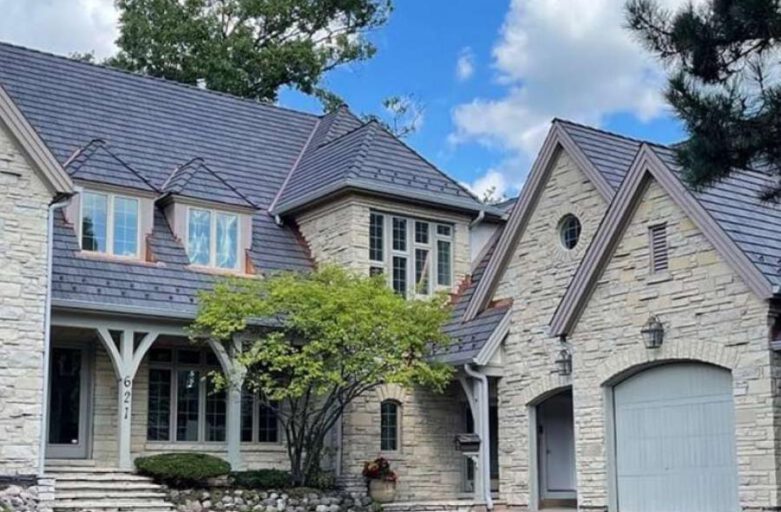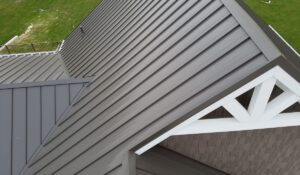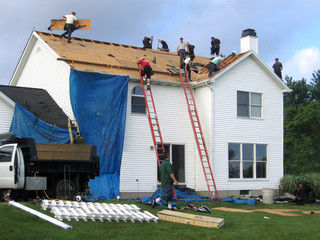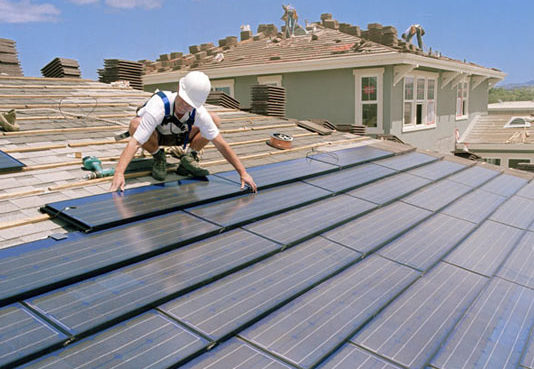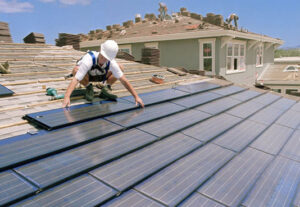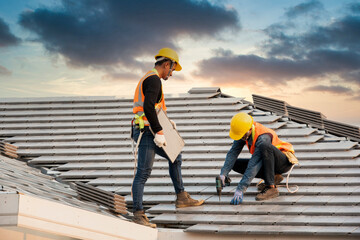A roof protects your home from rain, snow, sunlight, and extremes of temperature. It is constructed in a wide variety of shapes, sizes, and materials. The back side of a shingle is covered with a sticky material that helps it adhere to the sheathing. The sheathing is cut on-site from framing lumber or fabricated in trusses by factory workers and then craned into place.
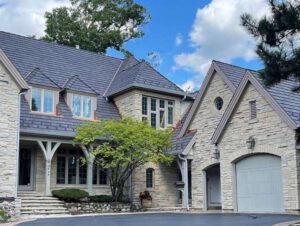
Roofing protects your home’s structure, furnishings, and possessions from all that Mother Nature throws at it. Without your roof, snow, rain, and intense summer heat would wreak havoc on everything inside your house. Your roof keeps all that from happening, protecting your belongings and allowing you to live comfortably in your house.
Be sure to check the condition of your roof regularly and consider re-roofing when necessary. You should also check and trim any bushes or trees that hang over your roof. These can be a hazard during the winter months when heavy snow and ice build up and high winds during blizzards can cause them to break off. This can also lead to leaking or damage to your roof and shingles.
Many homeowners go to great lengths to keep their homes cool in the summer. They may install energy efficient windows, close their curtains when the sun is up or even have trees planted to provide shade to the house from the direct sunlight. However, most people do not realize that a cool roof is also a key factor in keeping the home comfortable.
Roofing materials are specially chosen to defend against rain, snow, direct sunlight and extreme temperatures. Some roofing materials are more effective at keeping your home cool than others, and the color of the roof is a significant factor as well. If your roof is dark, it will absorb heat and quickly warm the inside of your home. A roof with a light color will reflect the heat instead and will help to keep your home cooler.
Proper attic ventilation is also a big factor in keeping your home cool. Make sure to talk to a licensed roofer about the type of attic ventilation that will work best for your home.
Whether you’re building from scratch or replacing your existing roof, an experienced roofing contractor can provide you with a range of options to suit your needs and the climate where you live. The material you choose, along with proper attic ventilation and insulation, will ensure that your home is comfortable all year round. The right roofing will help you to maintain optimal indoor temperatures and reduce energy bills significantly. It will also provide you with a durable and attractive protective layer that will add value to your property.
Adds Value to Your Home
There’s no doubt that an updated roof adds value to your home. This is especially true if you choose to reroof with premium shingles, energy efficient shingles or other roofing materials that are sought after by prospective home buyers.
While it’s true that a new roof won’t add the same resale value as an addition or a kitchen remodel, a new roof is often a valuable investment. According to a report by NARI, homeowners who completed a reroofing project in their homes saw more than half of the amount of money they invested back when they sold their houses.
Regardless of whether you plan to sell your house or not, an older or damaged roof will turn many prospective buyers away. If your roof looks worn out, a complete reroof may be necessary in order to maintain the integrity of your home’s exterior and prevent further damage from rain, hail or snow.
Prevents Mold and Mildew
Mold and mildew are one of the most common problems that homeowners have with their roofs. They can cause a lot of damage, and they can also lead to other problems within the home as well.
If you see that you have mold or mildew in your roof, it is important to have a roofing professional look at it right away. They can help to determine the best way to remove it and prevent it from coming back.
You may have seen black streaks on the roof of a neighbor’s house before. These are often signs of roof mold, which is caused by the growth of algae or a fungus called Gloeocapsa Magma. It grows in shady areas that remain wet throughout the day and can affect the health of your family if it isn’t removed promptly.
If the spores of mold or mildew are able to get inside of your roof, they can begin to spread throughout the house and cause serious problems with attic wood and the drywall in your home. This can even lead to the rot of the roof structure itself.
Leaks in the roof can encourage the growth of mold and mildew as well. This is because the water that gets into the attic and drywall can cause them to soften. It can also cause the paint around the windows to bubble or peel.
The best way to prevent the occurrence of mold or mildew is to have your roof regularly inspected by a roofing contractor. It is also recommended that you trim any trees overhanging your roof and keep it free from debris such as leaves.
You can also use a product to protect your roof against algae, moss, and mold growth. This spray-on product can be applied to your roof and is designed to kill the spores of these plants. You can find this product online or at most roofing supply stores. In addition to this, you can purchase roofing materials that are impregnated with chemicals such as copper or zinc, which will help prevent the buildup of these types of organisms on your roof.
